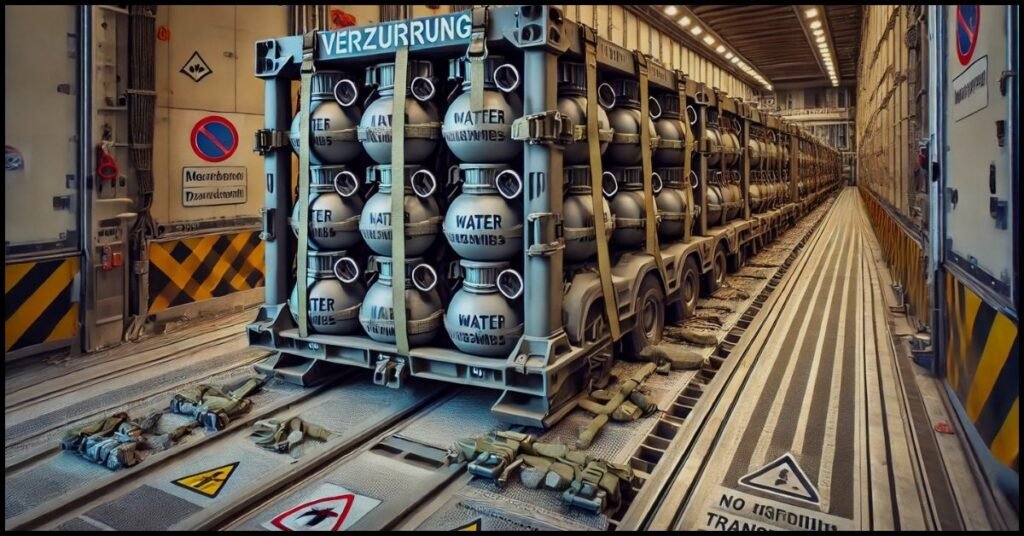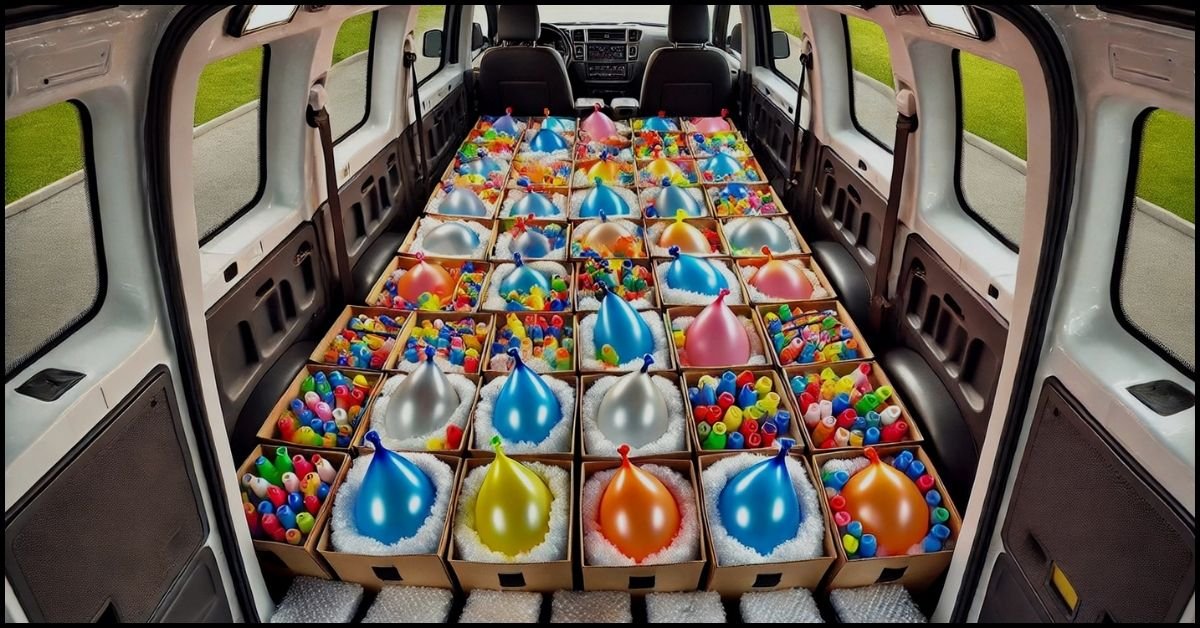Contents
- 1 Introduction to Verzurrung Wasserbomben
- 2 Understanding Verzurrung: The Basics of Securing Water Balloons
- 3 Step-by-Step Guide to Proper Verzurrung of Water Balloons
- 4 Essential Tools and Equipment for Effective Verzurrung
- 5 Preventing Common Mistakes When Transporting Water Balloons
- 6 FAQs About Proper Verzurrung of Water Balloons
- 7 Conclusion
Introduction to Verzurrung Wasserbomben
Transporting fragile or sensitive items like water balloons (Wasserbomben) requires meticulous care and attention to remain intact during the journey. Proper Verzurrung (securing) techniques are essential for safe transport, especially when preventing leaks, bursts, and damages. This guide dives into the best practices for obtaining water balloons, offering tips and strategies to help you navigate this delicate task safely. Whether handling a small batch for a family event or transporting them in bulk for a significant event, this guide will walk you through all the necessary steps.
Understanding Verzurrung: The Basics of Securing Water Balloons
Before diving into specific methods, it’s essential to understand what Verzurrung involves. Verzurrung refers to safely securing cargo to prevent it from shifting or breaking during transportation. In the case of water balloons, this process can be particularly tricky, as even a small impact can cause a balloon to burst.
Why Verzurrung is Essential
When transporting water balloons, factors like road bumps, sudden stops, and temperature fluctuations can all lead to damage. Proper securing methods help:
- Prevent Water Balloon Breakage By reducing movement inside containers.
- Maintain Proper Arrangement: Ensuring balloons stay in their original placement.
- Avoid Leakage: Minimizing pressure points that could cause the balloons to burst.
Common Issues During Water Balloon Transport
Water balloons are delicate, and the following issues are shared if they’re not appropriately secured:
- Punctures and Bursts: Caused by friction or collisions.
- Leaks: Slow, undetected leaks can weaken the balloons.
- Uneven Pressure: Balloons can press against one another, creating weak spots.
Proper Verzurrung techniques can help mitigate these risks, ensuring safe and intact transport.
Step-by-Step Guide to Proper Verzurrung of Water Balloons

To successfully secure water balloons for transport, you must use specific techniques that cater to their fragility. Below is a step-by-step guide to help you ensure their safe passage.
Choosing the Right Containers
The first step in securing water balloons is selecting the proper containers. Containers should be soft yet firm enough to maintain shape without pressing too tightly on the balloons.
- Best Types of Containers:
- Foam-lined crates
- Cushioned plastic bins
- Bubble wrap-lined baskets
These containers help absorb any shocks or bumps during transport and prevent pressure from directly applying to the balloons.
Pre-arranging the Water Balloons
Once you have the correct container, arrange the water balloons so they don’t touch each other directly. Use materials like:
- Soft cushioning materials include Sponges, soft towels, or foam pieces.
- Dividers: Create sections inside the container to hold each water balloon separately.
Proper spacing between balloons helps avoid direct contact, reducing the risk of bursts during transit.
Wrapping for Extra Security
To provide an extra layer of protection, wrap each water balloon individually. Materials that work best include:
- Plastic Wrap: Lightweight yet provides enough protection.
- Soft Cloths: Old cotton T-shirts or microfiber towels.
- Bubble Wrap: Adds extra cushioning for each balloon.
By wrapping each balloon, you ensure they are shielded from external elements and friction within the container.
Securing the Lid and Strapping the Container
Once your balloons are arranged and wrapped inside the container, secure the lid tightly but not too tight. An adequately secured lid prevents unwanted movement during the journey.
- Lid Fastening Methods:
- Using bungee cords
- Latching with clasps or zip ties
- Wrapping the entire container with a robust and stretchable material
Be sure the lid doesn’t apply too much pressure on the balloons, as this can lead to them bursting.
Vehicle Placement for Safe Transport
When placing the containers inside your vehicle, ensure they are in an area with minimal movement and vibrations.
- Best Spots in Vehicles:
- The trunk of the car (if appropriately cushioned).
- On the floor between seats.
- The rear of a truck has cushioning to absorb vibrations.
Avoid placing the container near sharp objects, exposed heat, or areas with sudden movements (like on top of seats).
Essential Tools and Equipment for Effective Verzurrung
Having the right tools makes all the difference in adequately securing water balloons for safe transport. Here’s a list of must-have equipment:
Protective Wrapping Materials
As mentioned, bubble wrap and soft towels provide a cushion to protect water balloons.
Adjustable Straps
Ensure you have adjustable straps or bungee cords to hold containers tightly in place during transport. They also help secure lids that don’t lock properly.
Shock Absorbing Pads
Shock-absorbing foam pads or thick sponges can be placed under the containers to reduce the impact of road bumps during travel.
Non-Slip Mats
Non-slip mats keep containers from moving around during transportation, reducing the risk of accidental movement or jolts.
Preventing Common Mistakes When Transporting Water Balloons
Despite following all the necessary steps, there are still a few common mistakes to be aware of. Avoid these to ensure safe water balloon transport:
Overloading the Container
Avoid packing too many water balloons into one container. Overloading increases the chances of pressure buildup and popping balloons. Instead, split the balloons into multiple containers for safer transport.
Ignoring the Temperature
High temperatures cause the water inside balloons to expand, leading to bursts. Always transport water balloons in a cool, shaded area to avoid heat exposure.
Forgetting to Inspect Before Transport
Check the water balloons and container before transport to ensure no leaks or weak spots. Inspecting the balloons can prevent last-minute issues from ruining the transport.
FAQs About Proper Verzurrung of Water Balloons
How can I prevent water balloons from bursting during transport?
- Use cushioned containers, wrap each balloon individually, and avoid direct pressure on the balloons.
What’s the best container for transporting water balloons?
- Foam-lined or cushioned plastic bins work best as they absorb shock and minimize movement.
Is it safe to transport water balloons in hot weather?
- No, it’s best to avoid extreme temperatures. Heat causes the water inside to expand, which increases the risk of bursting.
Can I use regular straps to secure my water balloon container?
- Yes, but make sure they are adjustable straps and not too tight to avoid pressure on the balloons.
Should I wrap each balloon individually?
- Yes, individual wrapping provides extra protection from friction and impacts during transport.
How many water balloons should I pack in one container?
- Avoid overloading the container; it’s better to pack smaller amounts to prevent pressure buildup.
Conclusion
Transporting water balloons may seem simple, but proper preparation and securing techniques (Verzurrung) are required to ensure safe arrival. Choosing the correct containers, carefully arranging and wrapping the balloons, and using appropriate tools can prevent accidents and ensure your balloons arrive intact. Avoid common mistakes, such as overloading or ignoring temperature concerns, to further protect your cargo. Whether moving a few balloons or an entire load, this guide will help you secure your water balloons effectively for any trip.


